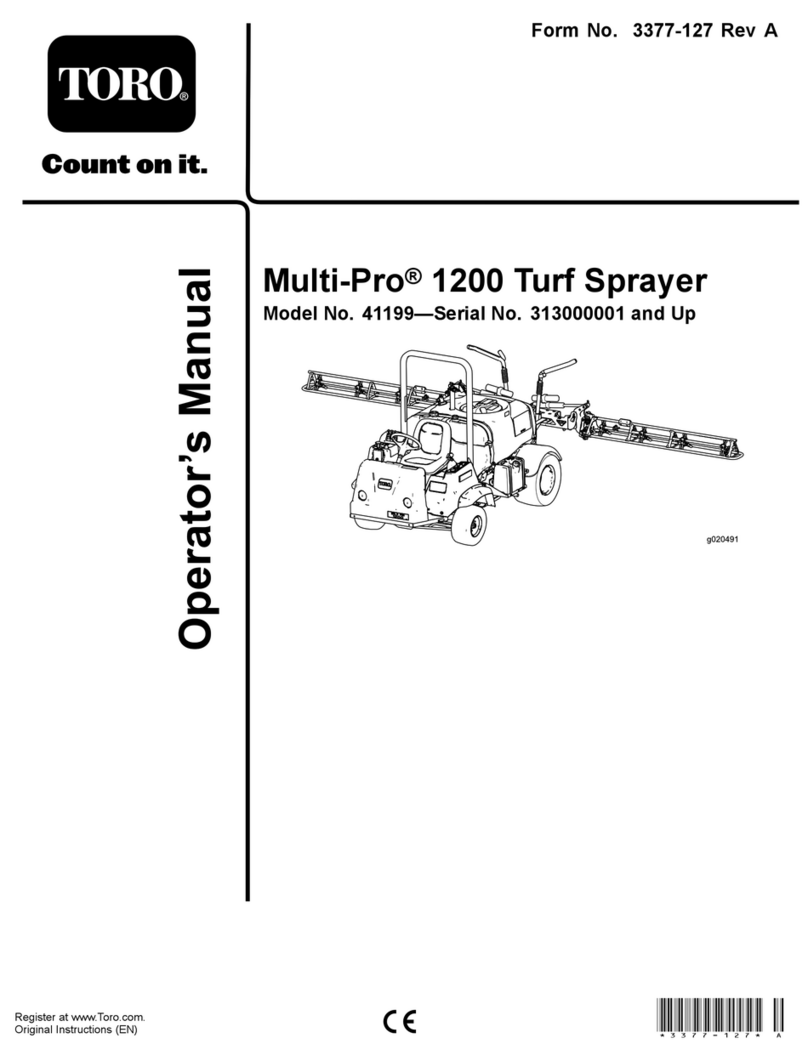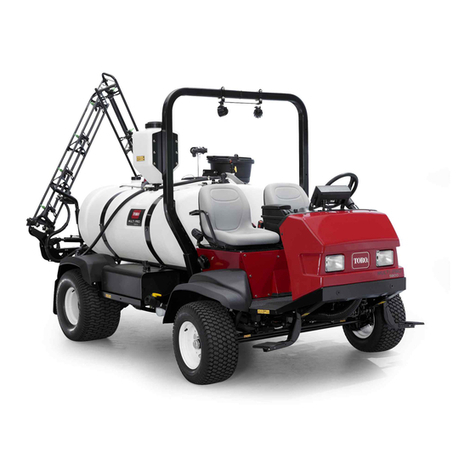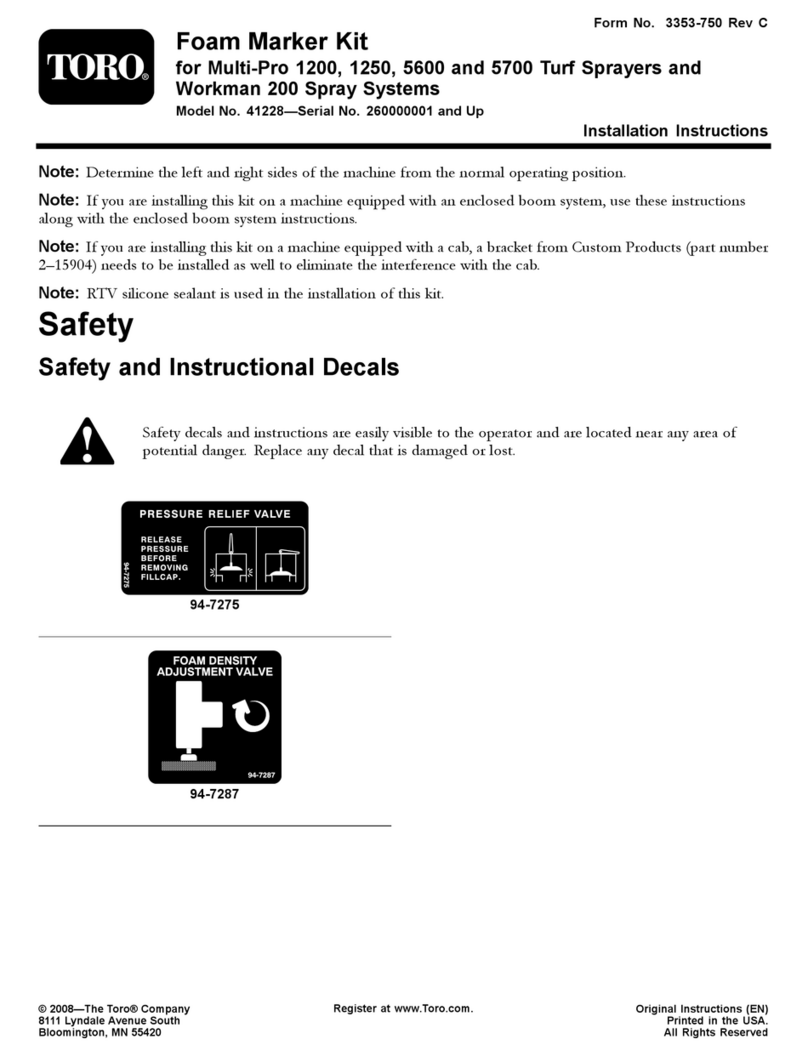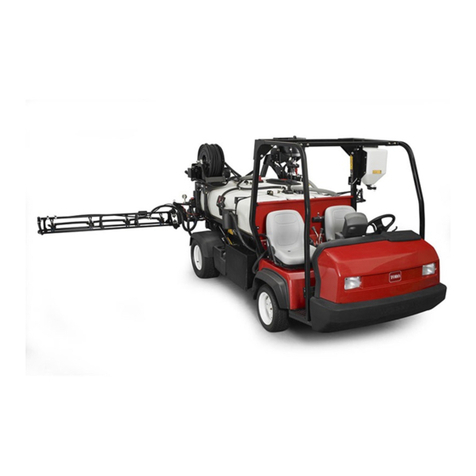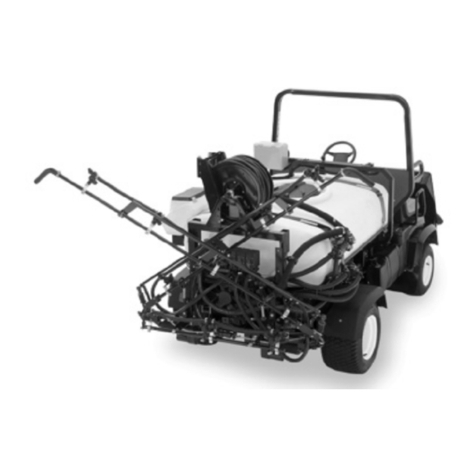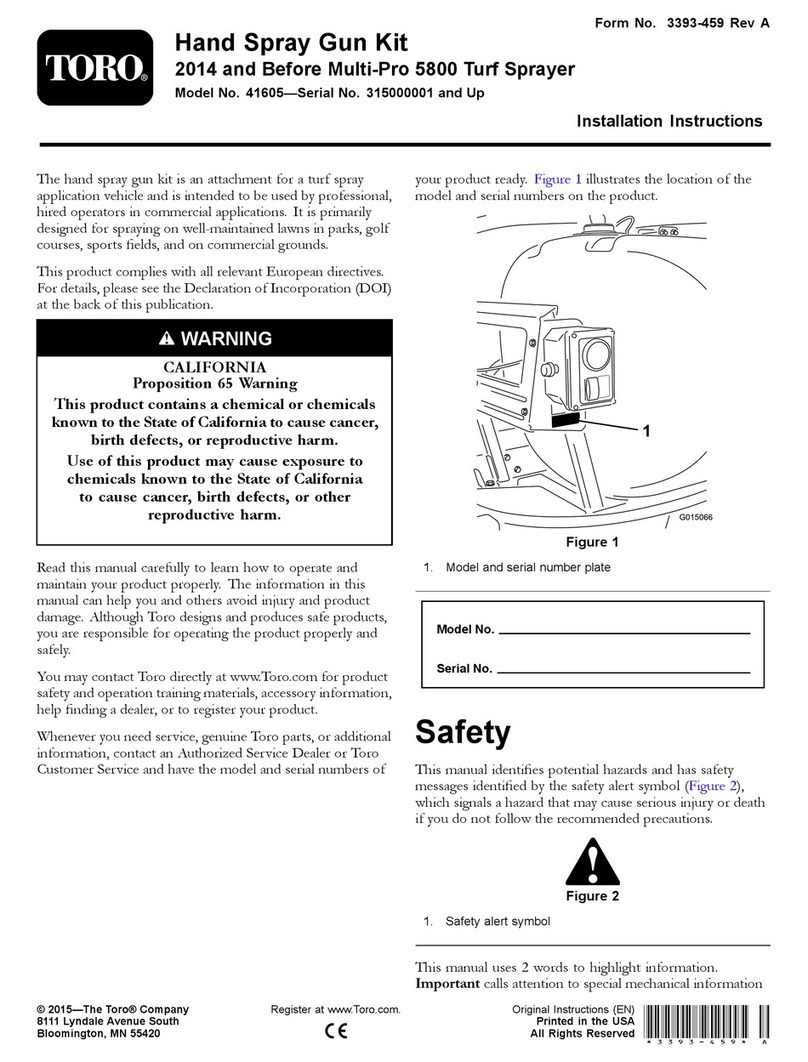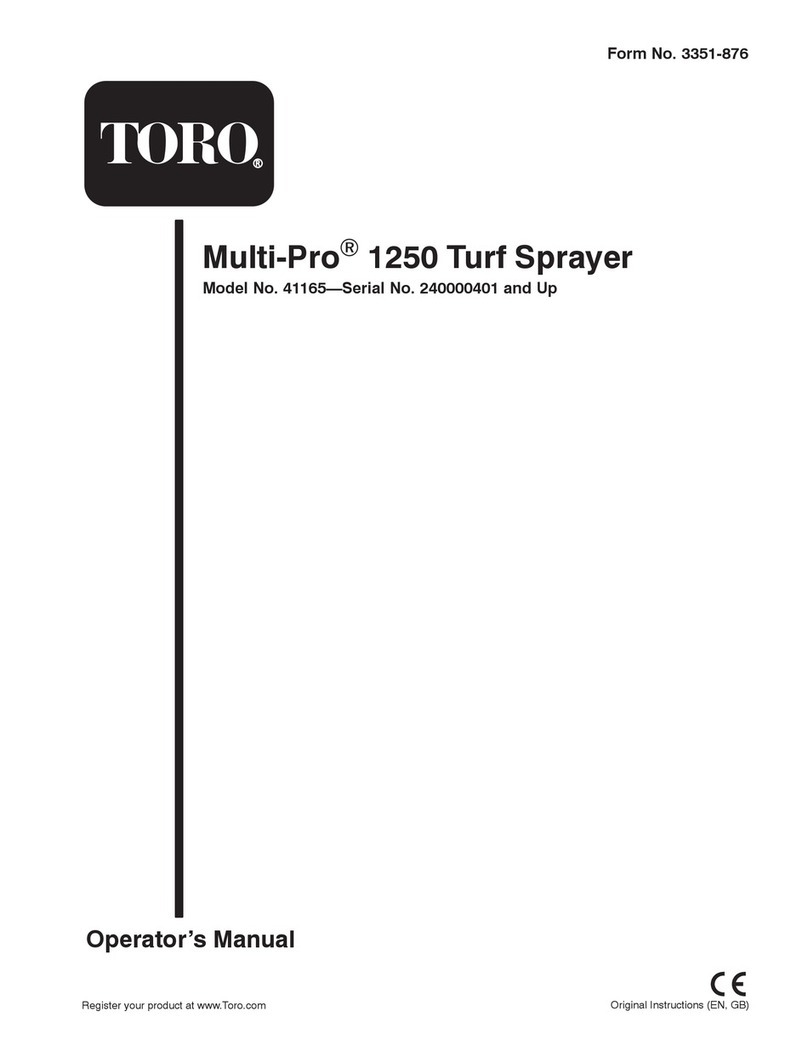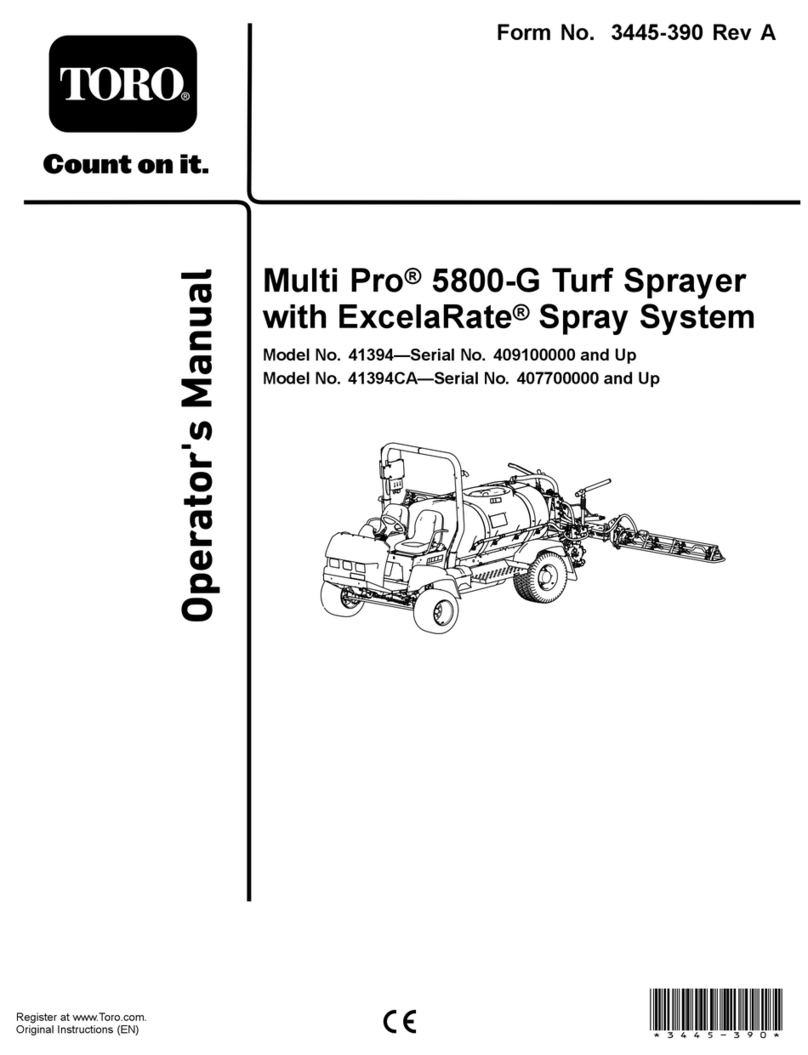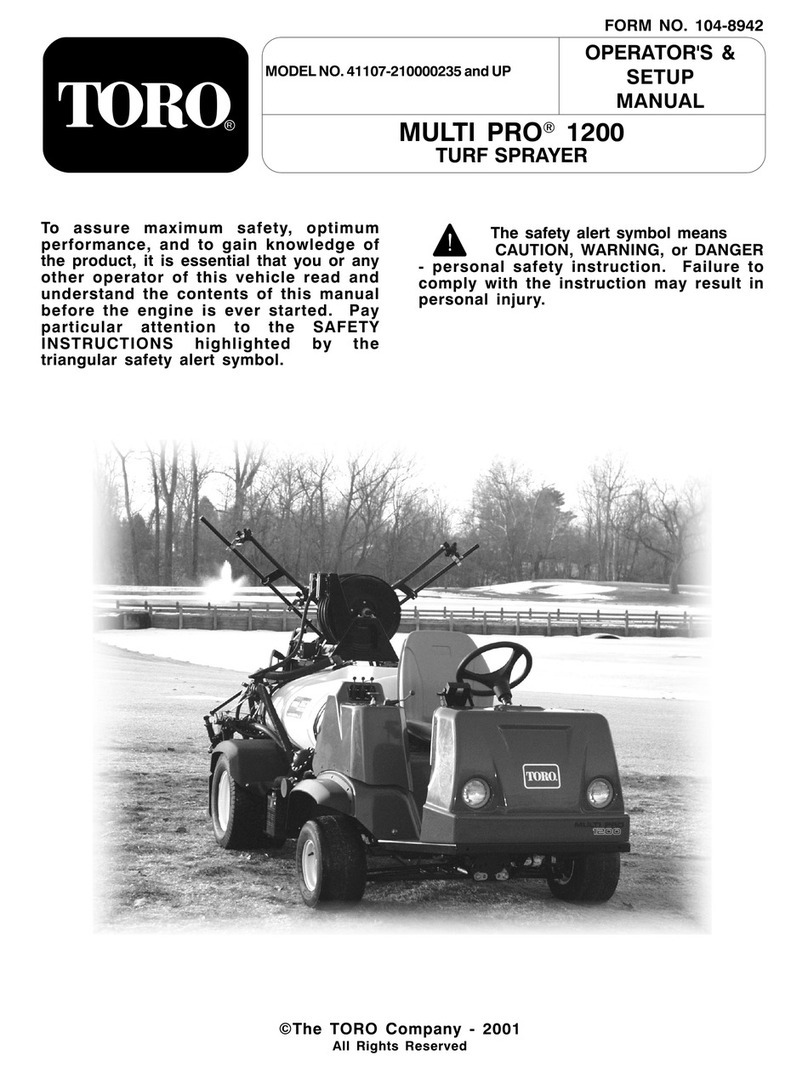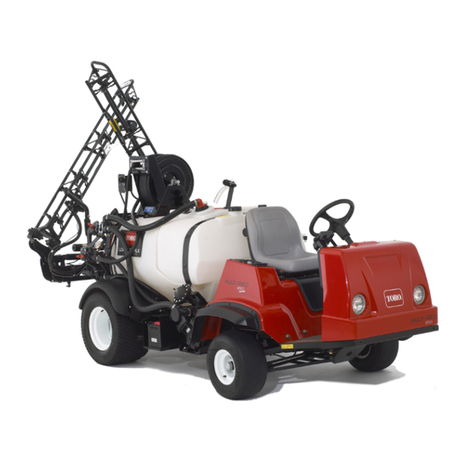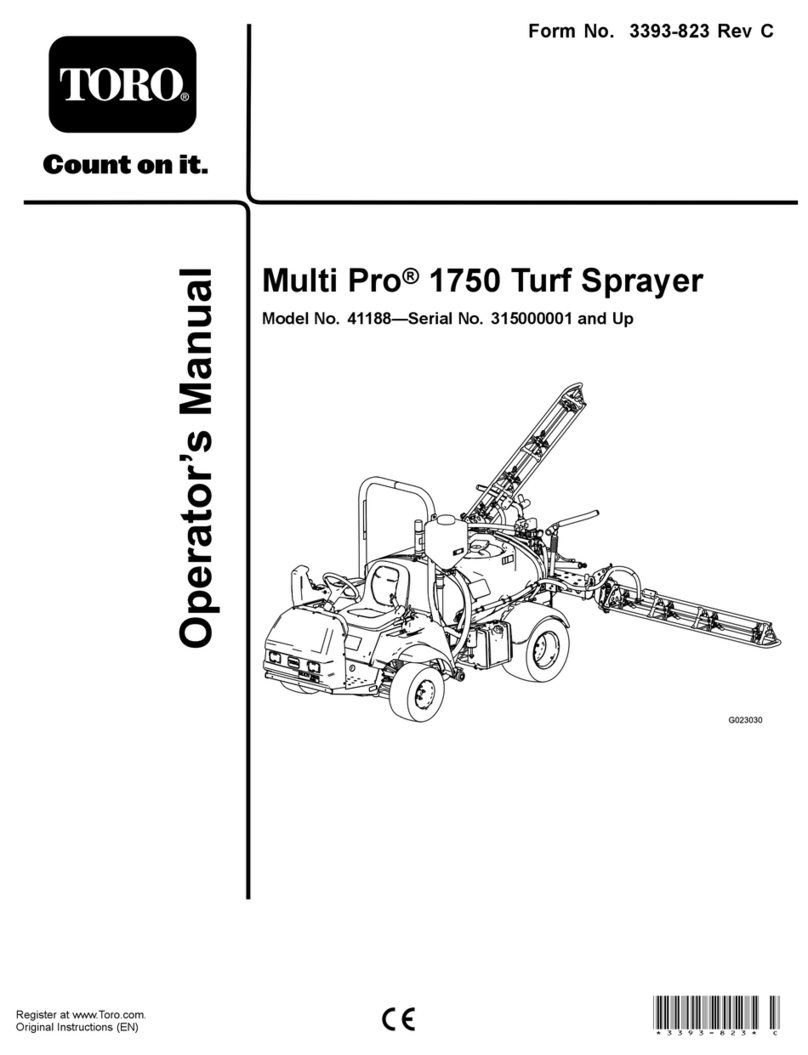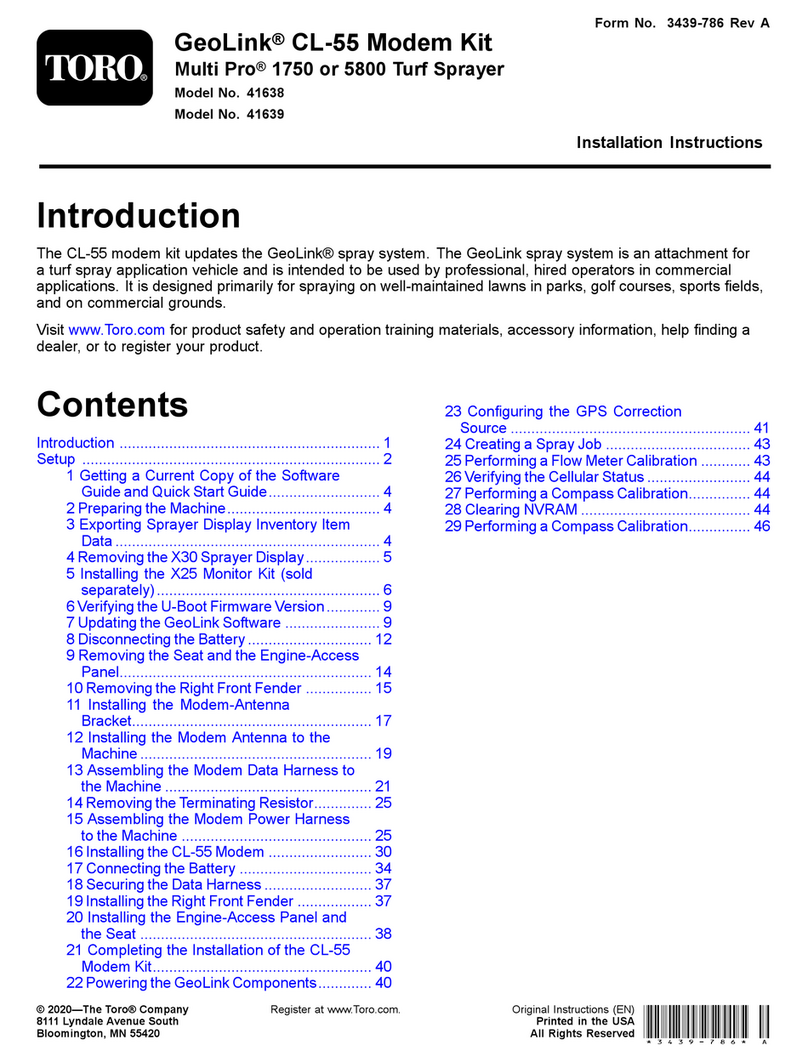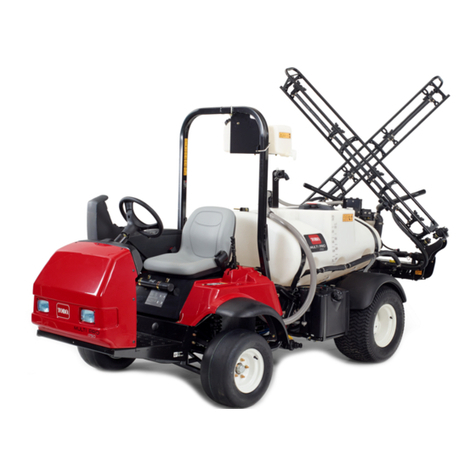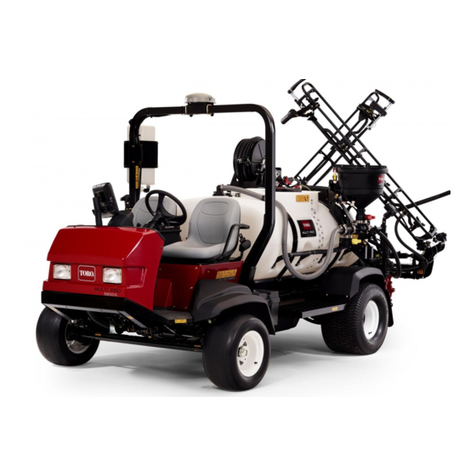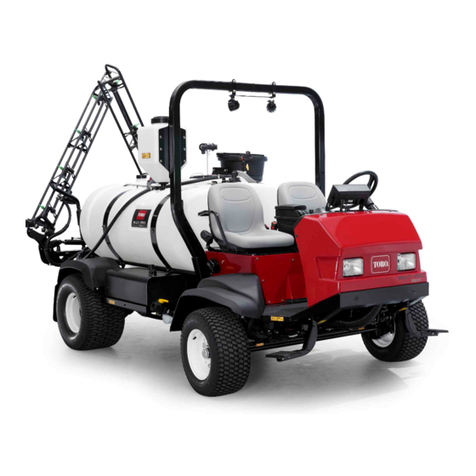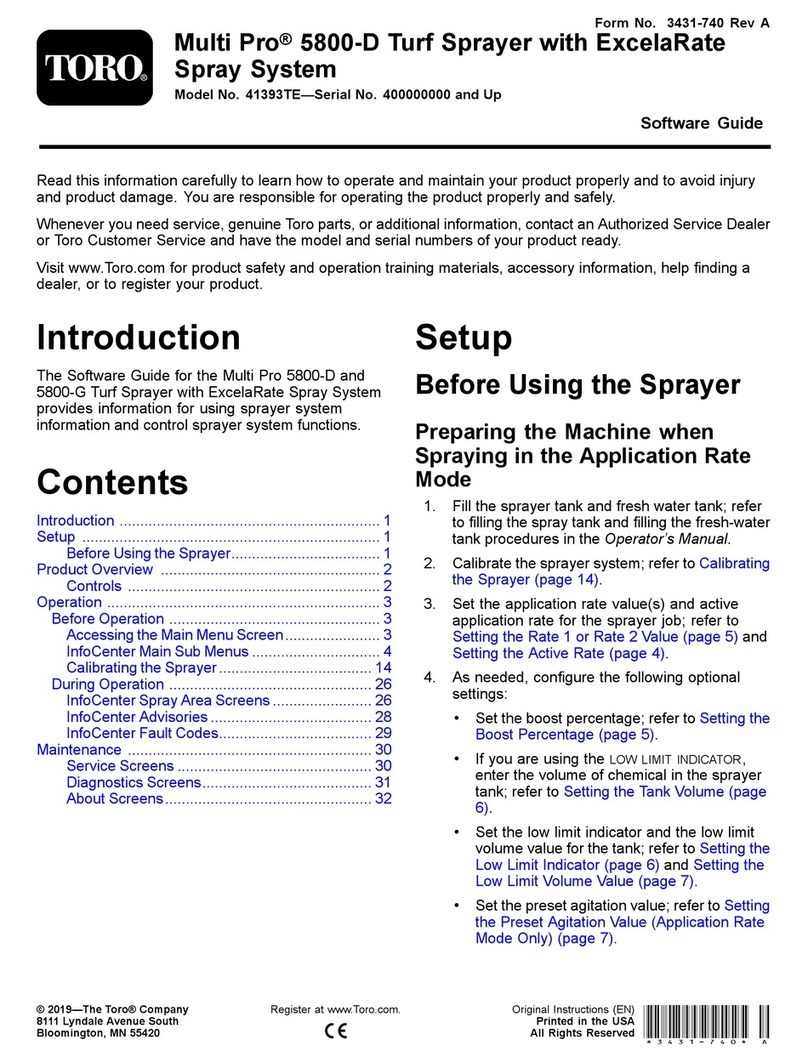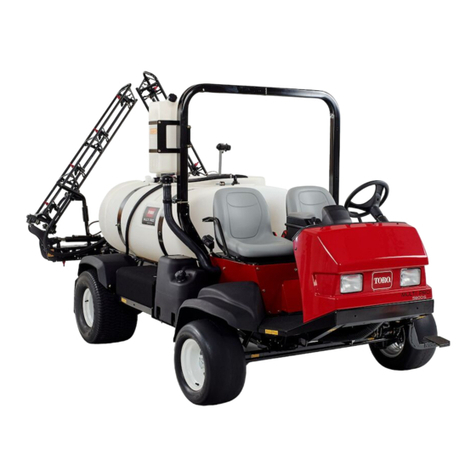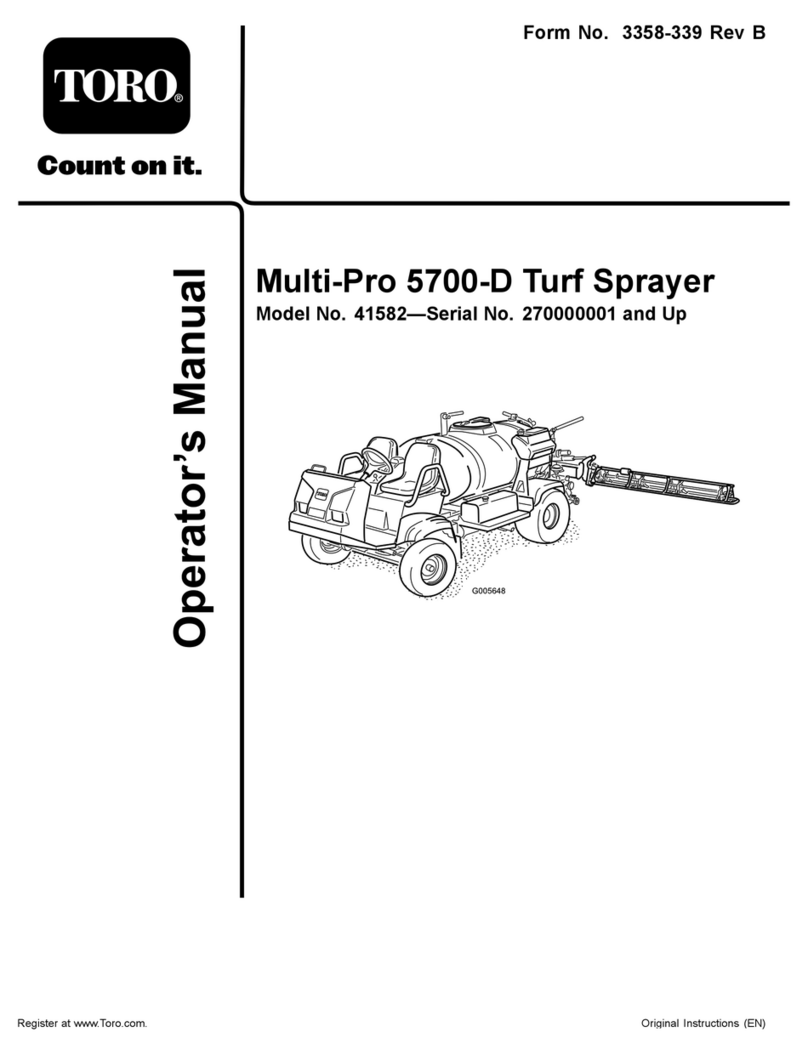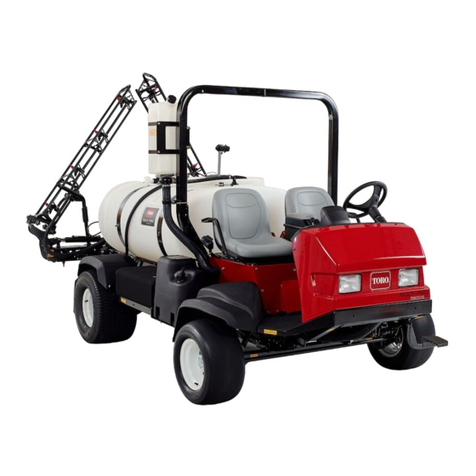
2
W2004 by The Toro Company
8111 Lyndale Avenue South
Bloomington, MN 55420-1196
Contact us at www.Toro.com
All Rights Reserved
Printed in the USA
CALIFORNIA
Proposition 65 Warning
The engine exhaust from this product contains
chemicals known to the State of California to cause
cancer, birth defects, or other reproductive harm.
Warning
Important The engine in this product is not equipped
with a spark arrester muffler. It is a violation of California
Public Resource Code Section 4442 to use or operate this
engine on any forest-covered, brush-covered, or
grass-covered land as defined in CPRC 4126. Other states
or federal areas may have similar laws.
This spark ignition system complies with Canadian
ICES-002.
Ce système d’allumage par étincelle de véhicule est
conforme à la norme NMB-002 du Canada.
Contents
Page
Introduction 3. . . . . . . . . . . . . . . . . . . . . . . . . . . . . . . . .
Safety 3. . . . . . . . . . . . . . . . . . . . . . . . . . . . . . . . . . . . . .
Safe Operating Practices 3. . . . . . . . . . . . . . . . . . . .
Chemical Safety 4. . . . . . . . . . . . . . . . . . . . . . . . . . .
Before Operating 4. . . . . . . . . . . . . . . . . . . . . . . . . .
While Operating 5. . . . . . . . . . . . . . . . . . . . . . . . . . .
Maintenance 6. . . . . . . . . . . . . . . . . . . . . . . . . . . . . .
Sound Pressure 7. . . . . . . . . . . . . . . . . . . . . . . . . . . .
Sound Power 7. . . . . . . . . . . . . . . . . . . . . . . . . . . . .
Vibration 7. . . . . . . . . . . . . . . . . . . . . . . . . . . . . . . . .
Safety and Instruction Decals 7. . . . . . . . . . . . . . . . .
Specifications 11. . . . . . . . . . . . . . . . . . . . . . . . . . . . . . . .
Optional Equipment 12. . . . . . . . . . . . . . . . . . . . . . . .
Setup 12. . . . . . . . . . . . . . . . . . . . . . . . . . . . . . . . . . . . . .
Loose Parts 12. . . . . . . . . . . . . . . . . . . . . . . . . . . . . . .
Before Operating 12. . . . . . . . . . . . . . . . . . . . . . . . . . . . .
Checking the Engine Oil Level 12. . . . . . . . . . . . . . .
Checking the Tire Pressure 13. . . . . . . . . . . . . . . . . .
Adding Fuel 13. . . . . . . . . . . . . . . . . . . . . . . . . . . . . .
Filling the Fuel Tank 14. . . . . . . . . . . . . . . . . . . . . . .
Checking the Coolant Level 14. . . . . . . . . . . . . . . . . .
Checking the Hydraulic Fluid 15. . . . . . . . . . . . . . . .
Checking the Brakes 15. . . . . . . . . . . . . . . . . . . . . . .
Filling the Fresh Water Tank 16. . . . . . . . . . . . . . . . .
Operation 16. . . . . . . . . . . . . . . . . . . . . . . . . . . . . . . . . . .
Think Safety First 16. . . . . . . . . . . . . . . . . . . . . . . . . .
Page
Vehicle Controls 16. . . . . . . . . . . . . . . . . . . . . . . . . . .
Pre-Starting Checks 18. . . . . . . . . . . . . . . . . . . . . . . .
Starting the Engine 18. . . . . . . . . . . . . . . . . . . . . . . . .
Bleeding the Fuel System 18. . . . . . . . . . . . . . . . . . . .
Driving the Sprayer 19. . . . . . . . . . . . . . . . . . . . . . . .
Stopping the Engine 19. . . . . . . . . . . . . . . . . . . . . . . .
Setting the Cruise Control 19. . . . . . . . . . . . . . . . . . .
Breaking in a New Sprayer 19. . . . . . . . . . . . . . . . . .
Transporting the Sprayer 20. . . . . . . . . . . . . . . . . . . .
Towing the Sprayer 20. . . . . . . . . . . . . . . . . . . . . . . .
Sprayer Controls and Components 21. . . . . . . . . . . .
Adjusting the Boom Bypass Valves 23. . . . . . . . . . . .
Operating the Sprayer 23. . . . . . . . . . . . . . . . . . . . . .
Maintenance 26. . . . . . . . . . . . . . . . . . . . . . . . . . . . . . . . .
Recommended Maintenance Schedule 26. . . . . . . . .
Daily Maintenance Checklist 27. . . . . . . . . . . . . . . . .
Jacking the Sprayer 28. . . . . . . . . . . . . . . . . . . . . . . .
Inspecting the Wheels and Tires 29. . . . . . . . . . . . . .
Servicing the Air Cleaner 29. . . . . . . . . . . . . . . . . . . .
Servicing the Engine Oil 30. . . . . . . . . . . . . . . . . . . .
Servicing the Fuel Tank 31. . . . . . . . . . . . . . . . . . . . .
Checking the Fuel Line and Connections 31. . . . . . .
Draining the Fuel Filter/Water Separator 31. . . . . . . .
Bleeding Air from the Injectors 32
. . . . . . . . . . . . . . .
Greasing the Sprayer 32. . . . . . . . . . . . . . . . . . . . . . .
Greasing the Boom Pivot Arms 33. . . . . . . . . . . . . . .
Replacing the Fuel Filters 34. . . . . . . . . . . . . . . . . . .
Servicing the Cooling System 34. . . . . . . . . . . . . . . .
Servicing the Hydraulic Oil 35. . . . . . . . . . . . . . . . . .
Changing the Planetary Gearbox Fluid 36. . . . . . . . .
Adjusting the Brakes 37. . . . . . . . . . . . . . . . . . . . . . .
Adjusting the Throttle Lever Tension 37. . . . . . . . . .
Adjusting the Front Wheel Toe-in 38. . . . . . . . . . . . .
Servicing the Drive Belts 39. . . . . . . . . . . . . . . . . . . .
Replacing the Fuses 39. . . . . . . . . . . . . . . . . . . . . . . .
Servicing the Battery 39. . . . . . . . . . . . . . . . . . . . . . .
Cleaning the Suction Strainer 41. . . . . . . . . . . . . . . .
Adjusting the Extension Booms 41. . . . . . . . . . . . . . .
Adjusting the Boom Bypass Valves 42. . . . . . . . . . . .
Stowing the Boom Extensions 42. . . . . . . . . . . . . . . .
Storage 42. . . . . . . . . . . . . . . . . . . . . . . . . . . . . . . . . . . . .
Troubleshooting 43. . . . . . . . . . . . . . . . . . . . . . . . . . . . . .
Troubleshooting the Engine and Vehicle 43. . . . . . . .
Troubleshooting the Spray System 46. . . . . . . . . . . .
The Toro General Commercial Products Warranty 48. . .
